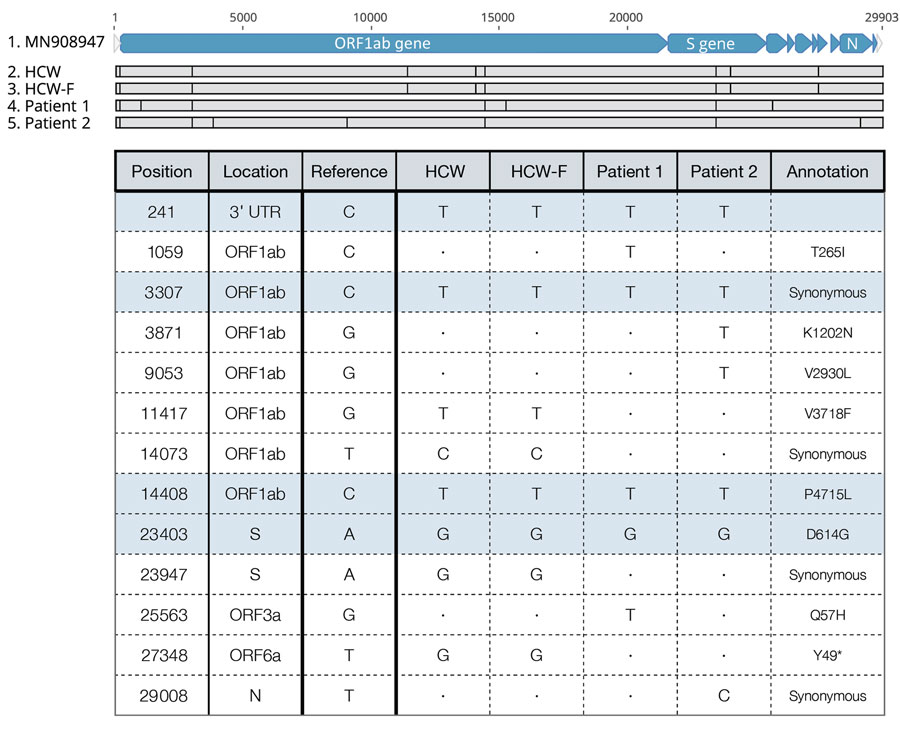Volume 26, Number 10—October 2020
Research Letter
Using Virus Sequencing to Determine Source of SARS-CoV-2 Transmission for Healthcare Worker
Figure 2

Figure 2. Severe acute respiratory syndrome coronavirus (SARS-CoV-2) consensus-level single-nucleotide variants (SNVs) from investigation of SARS-CoV-2 infection in HCW, Madison, Wisconsin, USA, 2020. The top alignment image depicts the SARS-CoV-2 genome for all persons evaluated in this investigation and highlights SNVs identified relative to the original SARS-CoV-2 reference isolate from Wuhan, China (GenBank accession no. MN908947.3). The table contains additional information about each of these SNVs. Light blue shading indicates A2a clade-defining mutations. Dots indicate identity with reference sequence. Asterisk indicates a tyrosine-to–stop codon change. HCW, healthcare worker; HCW-F, HCW’s family member; ORF, open reading frame; UTR, untranslated region.